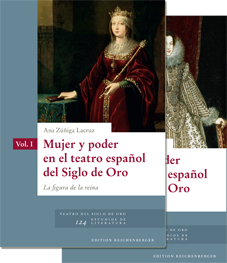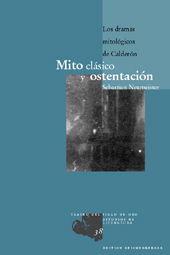|
|
|||||||||||||||
|
Early modern aulic festivals were a dazzling display of virtuosity that coordinated in a single event all the best artistic production available at court. Such was the interdependence of the arts in the early modern spectacle, that the playwright Calderón de la Barca, in presenting his works in print, lamented the shortcomings of his verses when they lacked the accompaniment of the other arts responsible for bringing the show alive: “Some parts will seem unexciting because paper cannot bring forth the sounds of music, nor the spectacular quality of the scenery, unless the reader is capable of exercising his imagination to behold in his mind what these could had been.” The fantastic sceneries which could appear or disappear with magical special effects; the brilliance of the costumes made of the richest materials; the precision of movement of dancers dancing to the harmonic music played by the court musicians; the sublime expression of words in poetry; all were brought together to proclaim the inventiveness, the wealth, the ordered skill, the harmony, and the eloquence that the prince could master in his domain. In this way, these spectacles created the image of power; an image which did not reflect the dynamics and hierarchies of the society that produced them, but rather modeled and molded them. Performing the King Divine proposes a framework for the systematic consideration of early modern festivals in the Spanish courts as a coherent phenomenon of ritual performance for the creation of a divine image of royal power using a historical, artistic, literary and anthropological approach. Starting with medieval examples that convey the ruler’s physical proximity to the divine, and ending with the identification of the ruler with the divine during the reign of the last Spanish Habsburg monarch Charles II, this study looks at the evolution of the discourse that represents the Habsburg dynasty’s divinely inspired imperial rights by means of performance within the cultural context of the productions. As ritual, the performance of these spectacles represent the place of the ruler in the order of things. The ideal society and culture surrounding him are represented and secured under the auspices of divine ordainment. In the process of the representation of this ideal order, these spectacles do not just reflect, but actually create such an order. Hence, the title of this book, Performing the King Divine, conveys a double meaning. On the one hand, in the process of the performance, the image of the king is performed onstage as the connection between his subjects and the divine realm. On the other, the spectacle, just as what John Searle termed a performative utterance, creates a new reality in the world: the body of the king as a divine being. The available studies on early modern Spanish aulic spectacles have either approached these examples of cultural production from a single discipline, or when they have attempted a more interdisciplinary approach, they have focused on one particular work or author. In order to address the variety of media that served the production of royal celebrations throughout the early modern period, Performing the King Divine provides an interdisciplinary evaluation and analysis of the early modern Spanish court spectacle from historical, anthropological, literary, and artistic points of view. Methodologically, Performing the King Divine has been inspired by the works of anthropologists that have studied the representation and creation of power through ritualized performance. It explores the ritualistic value of Spanish early modern court spectacles within a context—the heavily theatricalized courts of the Spanish Habsburgs—that could be described as “theater state.” This monograph treats these cultural manifestations as performance, rather than just text, and as works that bring together all possible forms of artistic expression to convey the message relevant to their particular milieu. Scholarship on royal entertainment in Europe from the 1960s until today has largely ignored the influence of the Spanish courts in the creation of the discourse (reflected in architecture, painting, music, poetry, etc.) that sustained the production and performances of these events. Performing the King Divine addresses this scholarly blindspot. The book not only suggests that we should reconsider the influence of Spanish court performance, it also makes material available which can be used for a reevaluation of the creation and dissemination of European courtly festive traditions in which the Spanish examples should be considered central rather than marginal.
TABLE OF CONTENTS Acknowledgements 1. Self Fashioning through Performance: From Church to Palace 2. Importing the Habsburgs’ Language of Empire: the Golden Age, Chivalry and Fabulous Genealogies 3. Philip III’s Dynastic Performance of Habsburg Policy: The Masque of Valladolid 1605 4. Court Actors and Court Stages under Philip III and Philip IV 5. The Golden Age at the Court of the King of Spain 6. Performing the King Divine Conclusion
Lucas A. Marchante-Aragón is an Associate Professor of Spanish at the College of Staten Island – City University of New York. He earned his Doctorate from the University of Pennsylvania after completing his Master of Arts at Villanova University and his Licenciatura at the Universidad de Cádiz, Spain. A specialist in early modern Hispanic culture, his research interests focus on Habsburg imperial policy and propaganda, their effects on issues of gender, ethnicity and nation building, and their expression through performance. His publications on these topics have appeared in scholarly journals such as Viator: Medieval and Renaissance Studies, Bulletin of the Comediantes, Journal of Early Modern Cultural Studies, Analecta Malacitana, Nueva revista de filología hispánica, and Hispanófila, among others. See also:
|
|||||||||||||||




